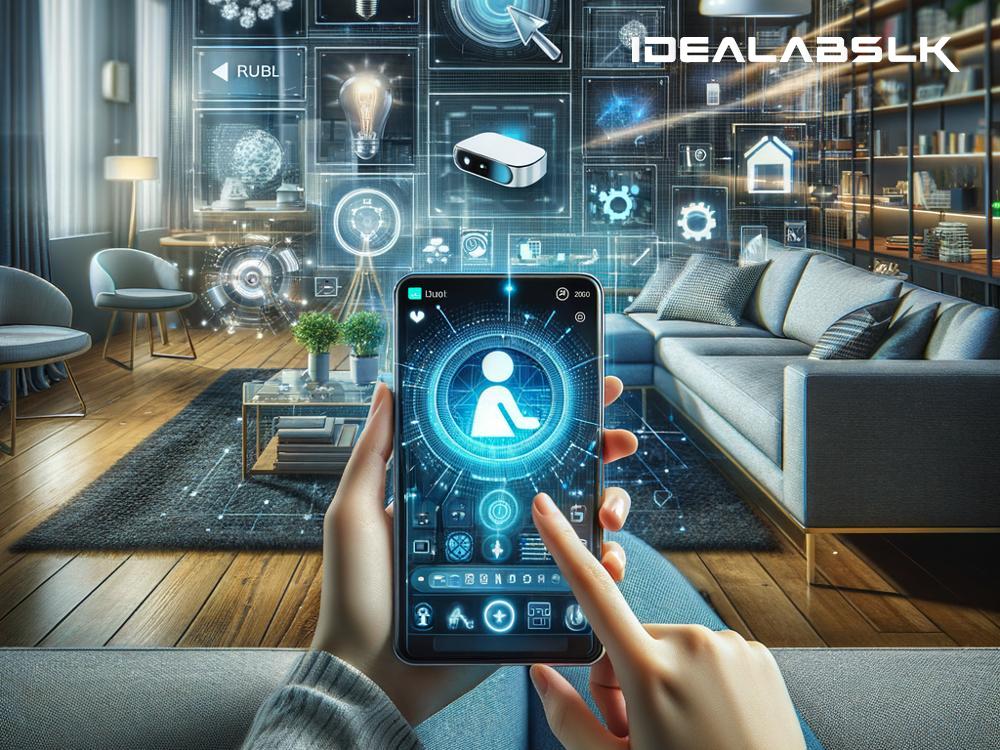The Future of UI/UX in AI-Powered Smart Homes
Imagine a home where lights adjust themselves based on your mood, a fridge that orders milk before you even realize you're out, or a voice assistant that knows you're planning a cozy movie night and dims the lights and sets the temperature just right. This future is not as far off as it might seem, thanks to the advancements in artificial intelligence (AI) and user interface/user experience (UI/UX) design. The integration of AI in our homes is making them smarter by the day, not just by automating tasks but by understanding our needs better, often before we articulate them. In this article, we explore the exciting future of UI/UX in AI-powered smart homes.
The Evolution of Smart Homes
Smart homes have come a long way from clunky, hard-to-use systems to sleek, intuitive interfaces that learn from user interactions. Initially, the focus was on individual smart devices—thermostats that could be controlled remotely, lights that change color via an app, or security cameras accessible from your smartphone. However, the future points towards a more integrated approach, where these individual components communicate with each other, with a central AI system orchestrating their operation to provide a seamless and cohesive user experience.
AI: The Brain Behind the Smart Home
The core of a smart home's UI/UX is its AI. The AI acts like the brain, making decisions, learning from patterns, and anticipating needs. It can recognize who is in the home and adjust settings to their preferences, whether it's playing a certain type of music when you're cooking or adjusting the thermostat to your ideal sleeping temperature. The more advanced AI becomes, the more personalized and predictive the experience. For instance, AI could analyze your calendar to know you have a busy day ahead and wake you up earlier, start your coffee maker, and suggest an outfit based on the day's weather and your schedule.
User Interface: The Look and Feel
The user interface is how you interact with the technology in your smart home, and the future here is both diverse and inclusive. Voice commands, gestures, touch screens, and even thoughts (thanks to neurotechnology) could be ways to communicate with your smart home. The focus will be on creating an intuitive, natural experience that feels like an extension of our daily activities. Imagine a kitchen countertop that displays recipes or instructional videos as you cook, or mirrors that show your schedule and the weather as you get ready in the morning.
The design of these interfaces will prioritize simplicity and accessibility, ensuring that anyone, regardless of tech-savviness or physical ability, can enjoy the benefits of a smart home. The visuals, sounds, and tactile feedback will be customizable, catering to personal preferences and needs, enhancing the sense of comfort and ease at home.
User Experience: The Heart of Interaction
The user experience in AI-powered smart homes will go beyond functionality; it will be about creating moments of delight, surprise, and comfort. AI will learn from your routines and adapt to your life changes, making the home truly feel like a partner in your daily life. The future of UI/UX in smart homes lies in creating experiences that are predictive, adaptive, and personalized.
For example, your home could create an atmosphere for relaxation after a long day at work by adjusting lighting, temperature, and playing soothing music as soon as you walk in. Or, it could help you stay connected with loved ones by suggesting a video call when you both have free time in your schedules.
Challenges and Considerations
While the future of UI/UX in AI-powered smart homes is bright, there are challenges and ethical considerations. Privacy and security are paramount, as these systems will have access to intimate details of our lives. Designers and developers must ensure data is protected and that users have control over their information. Additionally, there’s a need to design inclusively, ensuring that smart home technologies are accessible to everyone, regardless of age, disability, or technological literacy.
Conclusion
The future of UI/UX in AI-powered smart homes is about creating environments that understand and anticipate our needs, making our lives more convenient, comfortable, and connected. As AI and UI/UX design evolve, the interaction between humans and their living spaces will become more intuitive and personalized, transforming houses into true smart homes. The journey there promises to be exciting, full of innovations that will redefine our relationship with the places we live in.

